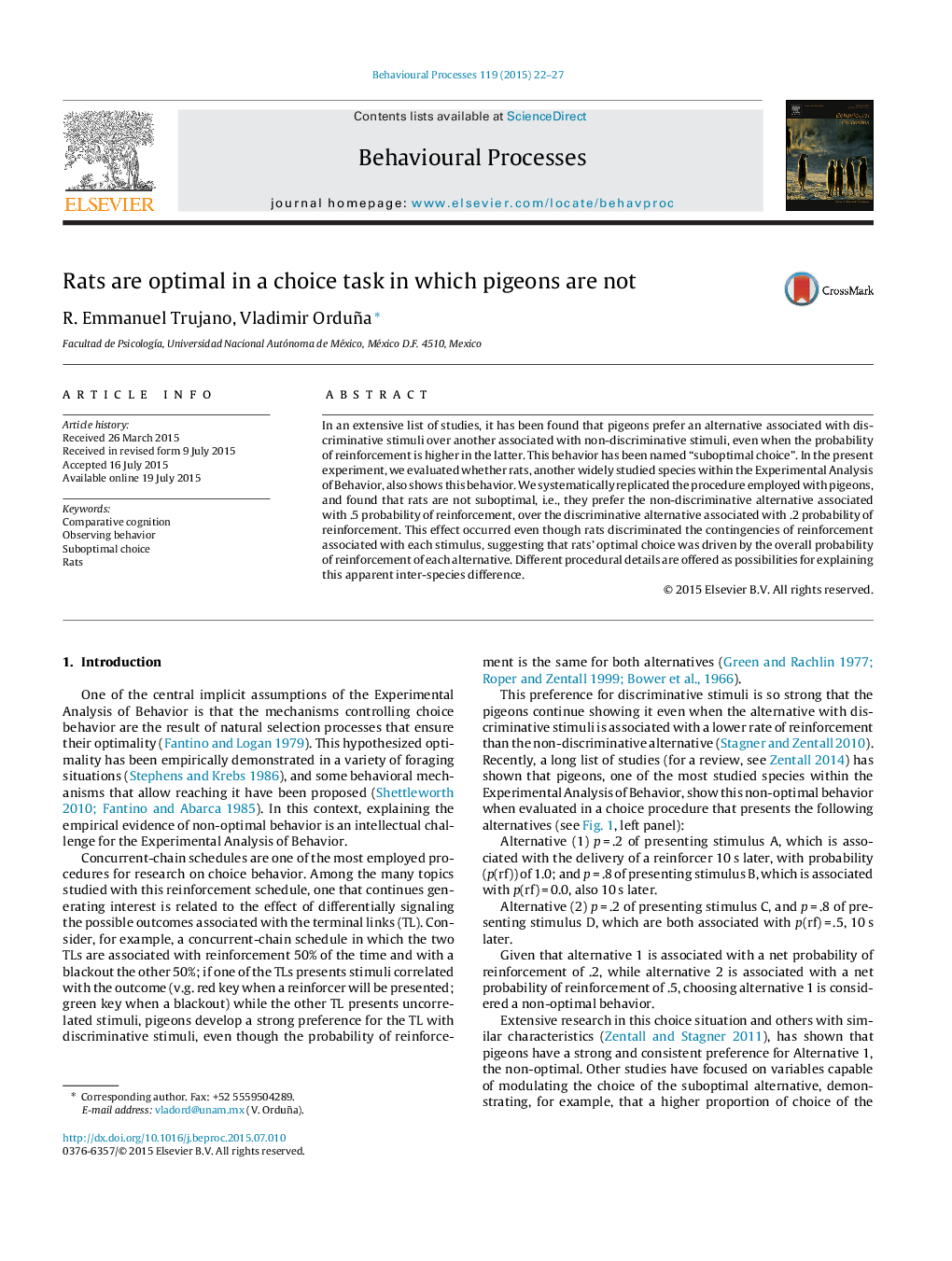| Article ID | Journal | Published Year | Pages | File Type |
|---|---|---|---|---|
| 2426513 | Behavioural Processes | 2015 | 6 Pages |
•We studied in rats preference for discriminative vs non-discriminative alternatives.•We systematically replicated with rats a procedure employed with pigeons.•Pigeons have been reported to behave suboptimally.•Rats were found to behave optimally.•We discuss some possibilities for reconciling the conflicting results.
In an extensive list of studies, it has been found that pigeons prefer an alternative associated with discriminative stimuli over another associated with non-discriminative stimuli, even when the probability of reinforcement is higher in the latter. This behavior has been named “suboptimal choice”. In the present experiment, we evaluated whether rats, another widely studied species within the Experimental Analysis of Behavior, also shows this behavior. We systematically replicated the procedure employed with pigeons, and found that rats are not suboptimal, i.e., they prefer the non-discriminative alternative associated with .5 probability of reinforcement, over the discriminative alternative associated with .2 probability of reinforcement. This effect occurred even though rats discriminated the contingencies of reinforcement associated with each stimulus, suggesting that rats' optimal choice was driven by the overall probability of reinforcement of each alternative. Different procedural details are offered as possibilities for explaining this apparent inter-species difference.
